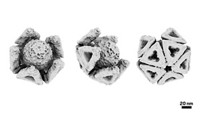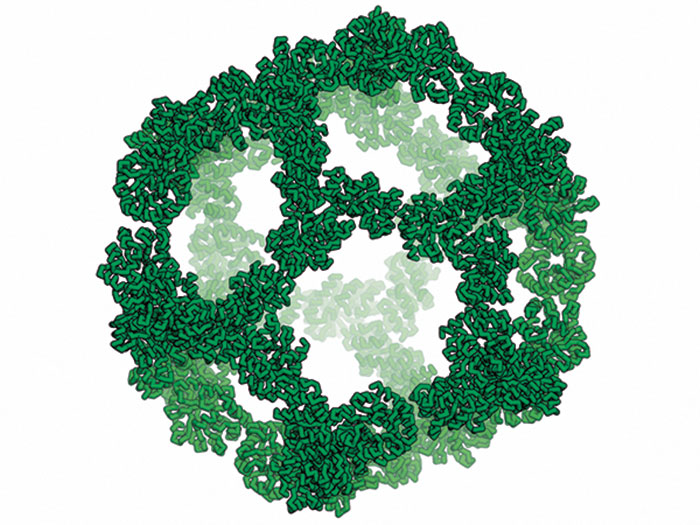Advertisement
Grab your lab coat. Let's get started
Welcome!
Welcome!
Create an account below to get 6 C&EN articles per month, receive newsletters and more - all free.
It seems this is your first time logging in online. Please enter the following information to continue.
As an ACS member you automatically get access to this site. All we need is few more details to create your reading experience.
Not you? Sign in with a different account.
Not you? Sign in with a different account.
ERROR 1
ERROR 1
ERROR 2
ERROR 2
ERROR 2
ERROR 2
ERROR 2
Password and Confirm password must match.
If you have an ACS member number, please enter it here so we can link this account to your membership. (optional)
ERROR 2
ACS values your privacy. By submitting your information, you are gaining access to C&EN and subscribing to our weekly newsletter. We use the information you provide to make your reading experience better, and we will never sell your data to third party members.
Materials
DNA origami hits the big time
New set of techniques enables the mass-production of micrometer-sized DNA structures
by Mark Peplow, special to C&EN
December 14, 2017
| A version of this story appeared in
Volume 95, Issue 49

Molecular architects have developed a quartet of methods that could propel DNA nanotechnology into wider use. Together, the techniques offer a tool kit to mass-produce larger and more complex “DNA origami” structures than ever before, paving the way for applications from drug delivery systems to nanoelectronics.

“I think people will now see that DNA nanotechnology is not just a small box of Tinkertoys,” says Hao Yan at Arizona State University, who was not involved in the research. “Now they will see some hope that you could use this for real applications.”
In DNA origami, a long “scaffold” of single-stranded DNA is folded into a predetermined shape by hundreds of shorter “staple” strands, which bind to specific positions on the scaffold.
To create larger DNA structures, Hendrik Dietz of the Technical University of Munich and coworkers used DNA origami to make various building blocks, including wedge-shaped “V bricks.” These could self-assemble into a range of 3-D shapes, including a dodecahedron with a mass of 1.2 billion daltons that Dietz reckons is the heftiest DNA structure ever made (Nature 2017, DOI: 10.1038/nature24651).
Peng Yin of Harvard Medical School and colleagues built more complicated shapes by using short strands of DNA with four unique binding domains, which snapped together with other strands like Legos (Nature 2017, DOI: 10.1038/nature24648). The team developed a software tool called Nanobricks that allowed them to delete specific bricks from the mixture to leave cavities in the resulting cuboid structures, fashioning shapes such as a teddy bear.
The third construction method, called fractal assembly, began with flat tiles of DNA origami that could interlock with their neighbors, ultimately forming an 8 x 8 panel about 650 nm wide (Nature 2017, DOI: 10.1038/nature24655). The team decorated the tiles’ staples with additional chunks of DNA, creating patterns (including a version of the “Mona Lisa”) that were visible under an atomic force microscope.
DNA architects tend to work with mere micrograms of material, insufficient for testing biomedical applications such as drug encapsulation and delivery. To scale up production, Dietz’s team used viruses called bacteriophages to make single strands of DNA containing a scaffold, staples, and built-in scissors called DNAzymes. When activated by zinc ions, these scissors snipped out the components so that they were ready for self-assembly.
When the team amplified the viral DNA strands inside Escherichia coli in a 2 L fermentation vessel, the components assembled to form 163 mg of a 70-nm-long nanorod. If this process were run at a contract biotech facility, the researchers estimate that DNA origami could be produced for a mere 18 cents per milligram, at least 1,000 times as cheap as conventional methods (Nature 2017, DOI: 10.1038/nature24650).
“With mass production in place and the ability to make these integrated structures, I hope progress will be faster,” Dietz says.





Join the conversation
Contact the reporter
Submit a Letter to the Editor for publication
Engage with us on Twitter